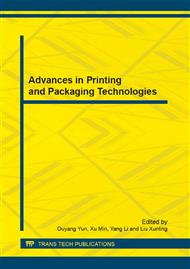p.207
p.213
p.217
p.223
p.227
p.231
p.235
p.243
p.247
A Study of E-Book Readability
Abstract:
Due to the popularity of the Internet and portable readers, the digital publishing market was highly developing. A study from Displayban showed that digital publishing had a market value of 13 billion U.S. dollars and had increased 68 percent of production value compared to that in 2010 globally. Meanwhile, the production value of e-book readers had a market share of 80 percent to the whole digital publishing market. However, reading and manipulating a traditional printed book and an e-book were tremendously different. The design and layout of an e-book definitely affected the readability. Therefore, how to increase e-book readability was a topical concern in digital publishing industry. A content analysis and an in-depth interview methods were adopted in the study. The content analysis aimed to analyze the best-selling car e-magazine, Car News, regarding to its readability. The in-depth interview was to consult the chief editor of the publishing house to understand readability strategies and rules applied in its e-book products. Finally, after the reliability test of encoders passed, and the results from e-book content analysis and in-depth interview were comprehensively compared in every aspects of readability. The conclusions were that the traditional rigorous book layout design principles, such as indent, column, paragraph style, typography, etc. should be applied onto e-books to provide a better readability. Meanwhile, too many interactive or multimedia objects can reduce readability. Although, editors and experts from digital publishing industry were all agree with this, but most of current e-books indeed had too many interactive or multimedia objects. Nevertheless, multimedia and interaction objects were the most important features of e-books in spite of less readability. In short, based on the study and trade off the readability of e-books, publishing companies should not import multimedia and interactive objects deliberately. On the contrary, based on the book content, multimedia or interactive objects could be applied with a proper consideration to achieve their characteristics and strengths. By doing this, subjects of e-book could be emphasized and readability can be remained as well.
Info:
Periodical:
Pages:
227-230
Citation:
Online since:
December 2012
Authors:
Keywords:
Price:
Сopyright:
© 2013 Trans Tech Publications Ltd. All Rights Reserved
Share:
Citation:


